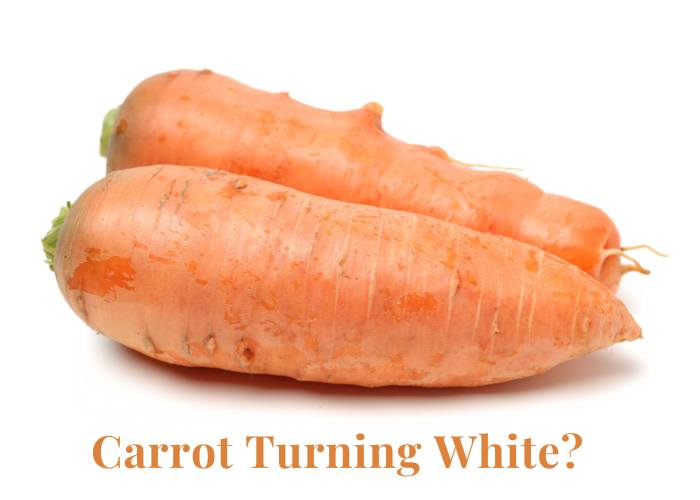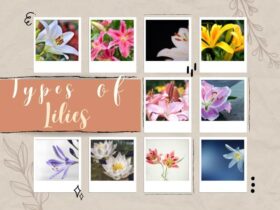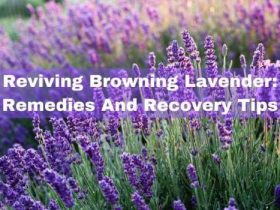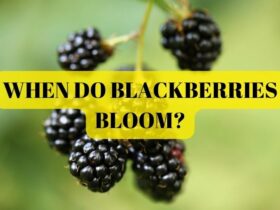Are you wondering what happened to your baby carrots after you placed them in the refrigerator, then discovered they turned white after a short period?
You can see a white carrot immediately after opening the bag. The bags of carrots I had in my fridge that I had not opened started turning white shortly after I placed them there. You might wonder why you have white carrots and if eating them is still okay if they are white.
A white carrot color is caused by dehydration. Because they can no longer hold water in, they turn white as soon as their skin is removed. Despite their appearance, carrots are still edible, even if they look ugly.
Several simple steps can be taken to prevent your carrots turning white or developing a white blush after harvesting.
Note there is difference between Parsnips and white carrot. Don’t get confuse by it.
In the Apiaceae family, the parsnip (Pastinaca sativa) is a root vegetable closely related to carrots and parsley. Parsley is not the same thing as carrots getting white. Don’t be confused!
Carrot Blush: How Does it Form?

During the drying process, a white carrot film forms due to moisture loss in the atmosphere. A white carrot loses moisture in their thin outer layer, leading to roughened surfaces and scattered light. In the end, the carrot looks whitish due to all this. As a result of the damage to its skin cells, carrots can also develop a white blush. Baby carrots have thinner skin that keeps water from them compared to regular carrots. When their leaves lose too much moisture, the outer layers turn white. Dehydration may be the cause of the white stuff. To rehydrate and restore the color of your carrots, soak them in water overnight.
Can a White Carrot be Eaten?
It was a pleasure serving the guests with vegetable trays throughout the evening, but the party has now ended. Those once luscious-looking baby carrots have been covered with a white film of shame. Shunning them serves no purpose. Having a little more compassion and understanding is necessary.
Baby carrots that we buy at stores might be cute, but they’re also naked. Once their protective exteriors have been buffed off, their surfaces can appear rough and white after being exposed to the air for a short period. There is nothing harmful about this white film called blush. Alternatively, you can rinse it with water to remove it.
Fixing White Carrot Blush
Putting the carrots in water for a few minutes could remove the whiteness temporarily.
To remove potentially harmful bacteria from the surface of fresh produce, manufacturers and processors sometimes use a mild solution of water and chlorine.
A 15-minute immersion in icy water will reduce the white appearance, and storing them in cold water in the refrigerator will obliterate the white. Whether they appear white or not, they are perfectly safe to consume. During this process, carrot enzymes produce lignin, which is contained in plant cell walls. In this case, it will be impossible for you to revive your carrots, and the white spots will remain. However, they will be tastier as a result.
Carrot Shelf Life: How to Prolong It
You shouldn’t hesitate to stock up on a white carrot if you enjoy eating raw carrots or making dishes that call for carrots. To keep carrots for a long time, you must learn how to store them properly.
Cooked and sliced carrots, in particular, require knowledge about how to prolong their shelf life. You can do that by freezing them or, at the very least, keeping them in a bag inside your refrigerator. These tips will help you extend carrots’ shelf life:
Maintain Carrots
You can extend the life of your carrots by properly storing them in the fridge. Make sure the green leaves are removed from the top of the plant. In a dry place in the refrigerator, such as the vegetable drawer, wrap them in a paper towel and store them in an airtight container.
Keep them whole
As soon as you alter carrots from their original state, their demise is accelerated. Store whole carrots in an airtight container in the refrigerator once you get home from the grocery store – don’t wash them because moisture will cause them to go bad sooner. Using peelers, carrots are exposed to water, promoting bacterial growth. Carrots with skin last longer when unpeeled because the skin protects them. If you peel and cut carrots, place a damp paper towel or container filled with an inch of water in front of them. If you don’t have an airtight container, the correct thing is to use a resealable plastic bag or freezer bag. Should you need to store them for a few days, you can do so in cold water.
Freeze carrots quickly
To maintain carrots’ optimal freshness/taste/texture, you should quickly freeze them after they have been thoroughly cooked. The carrot slices can be frozen after being arranged evenly on a baking sheet.
Frozen carrots should be placed in sealed containers once they have been frozen.
Pre-blanch carrots
The carrots should first be blanched if they have already been sliced. In zip-sealed bags, place the cooled carrots once they have cooled down. Be as thorough as possible when removing air from it. You can use a vacuum sealing system to close the packets to ensure they contain little atmosphere.
Conclusion
The carrot plant is a hardy plant that can withstand many pests and diseases if kept watered. Stored carrots, however, are prone to mold, decay, and dehydration once harvested. Those white carrots result from dehydration, and it’s not a severe issue. The solution to this issue can be found by reading on.
It is perfectly safe to eat blushing carrots, and you should do so immediately after purchasing them. It is possible to remove the white film on them by scrubbing or peeling them, although this may not appeal to you. You can still eat blushed carrots, cooked or raw.
When carrots become soft and wrinkly after drying out, they aren’t particularly appealing but still edible. If you cut off one end and place the cut portion in ice water, it will revitalize them, just like putting flowers in a vase! They are good in soups and stews.
For more planting guides, follow Kitchen Gardening!














Leave a Reply